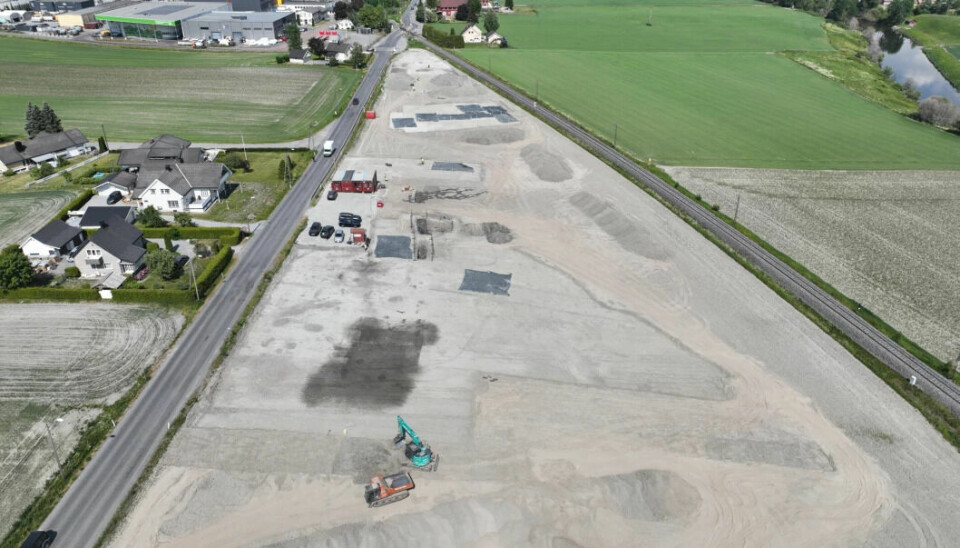
Archaeologists may have found a Viking house the length of almost two tennis courts
This summer's excavation at an ancient royal estate in Norway has uncovered traces of a massive house, an exquisite sword, and many remnants of lavish parties.
“A finely ornamented handle for a knife or fork was found here during a metal search a few years ago,” says Christian Løchsen Rødsrud, the leader of the nearly three-month-long excavation at Sem in Eiker this summer.
The knife or fork is associated with King Christian IV, who was the king of Denmark and Norway from 1588 to 1648. He stayed at the royal estate at Sem several times.
“He must have enjoyed himself greatly; we have found so many remains of animal bones, mussels, oysters, and everything that a nobleman would have liked to indulge in,” archaeologist Rødsrud says. “Important people and a host of servants must have lived here.”
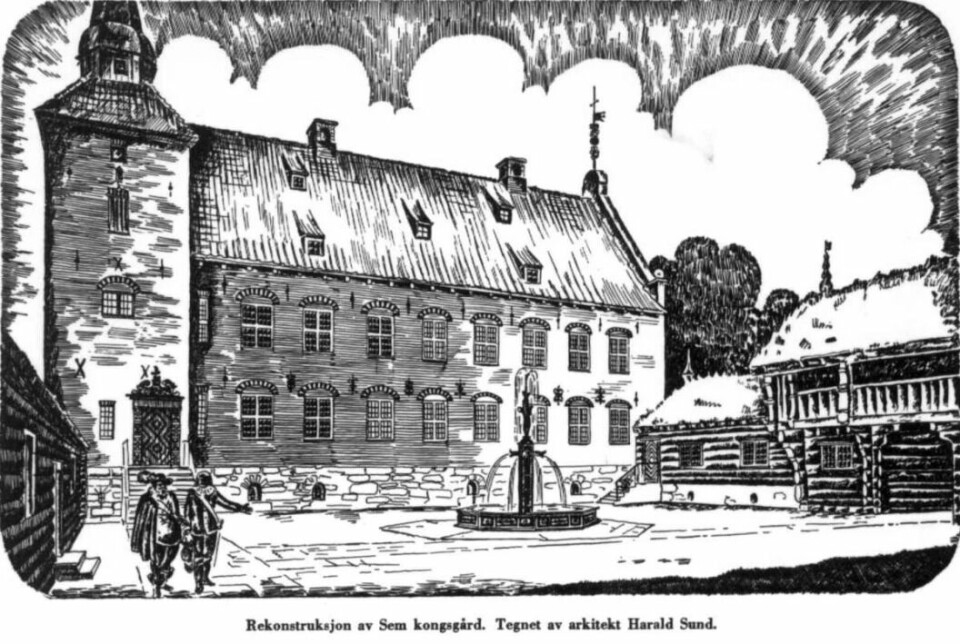
It is perhaps hard to believe now that this place has once been a central seat of power, located on a field in the rural countryside one hour drive from the Norwegian capital Oslo.
It was already known that there was a royal estate here at Sem. But it was less known that this had been an important power centre during the Viking Age and even back to the Late Bronze Age (link in Norwegian).
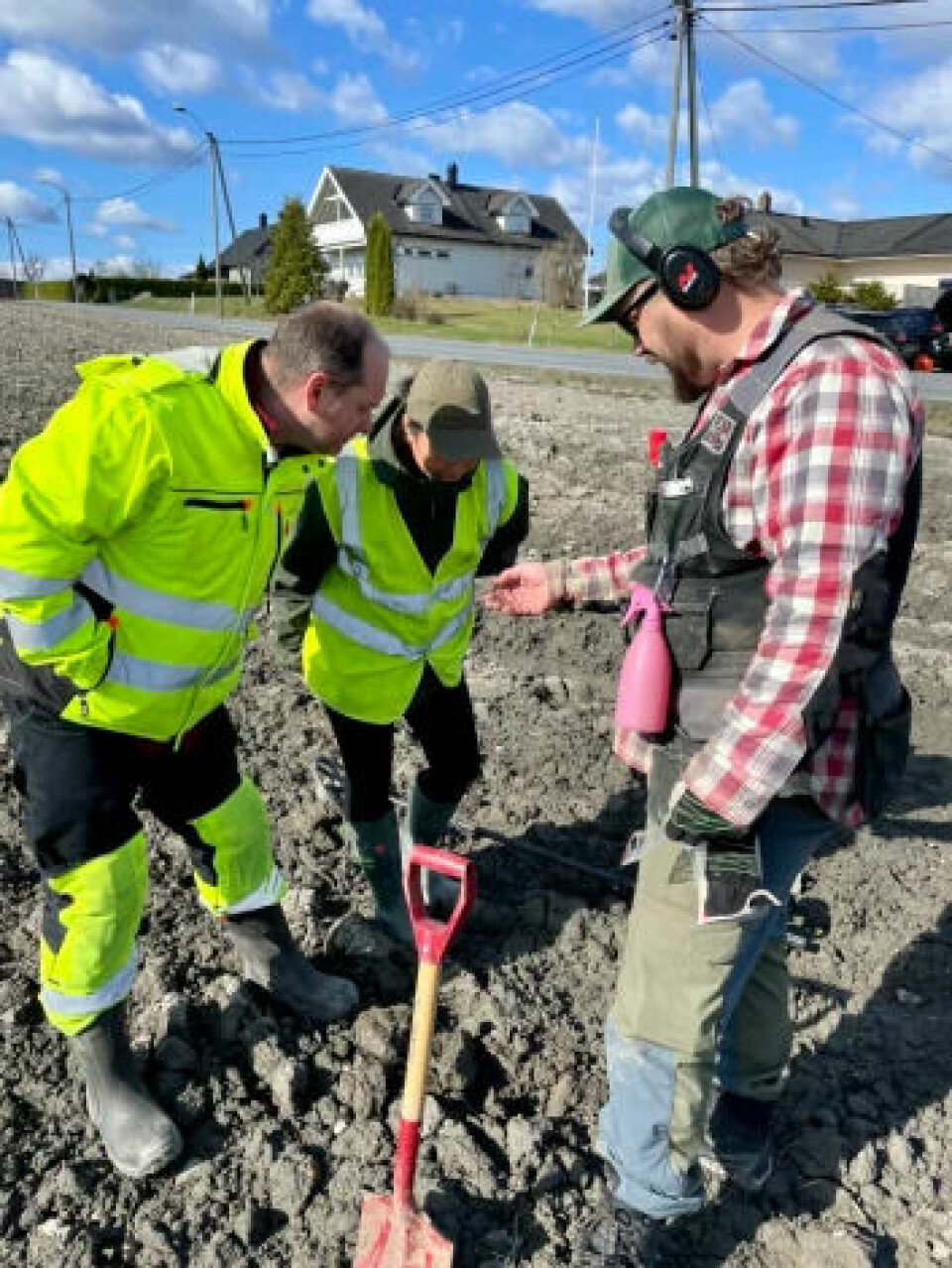
This area is quite far inland. However, at that time, the water level was much higher. Large Viking ships sailed all the way in from what is now known as the Drammen Fjord.
But in the 18th century, this place lost its significance, and its history was forgotten.
Until one day in 2014.
From individual finds to the grand narrative
On this day, the two metal detectorists Steffen Hansen and Daniel Ødegård were out doing what metal detectorists do – searching for and finding things.
They found coins from the Viking Age and the Middle Ages, two fragments of an Irish reliquary shrine, and pieces of a distinctive needle dating to the Bronze Age, around 600 years before our era.
Suddenly, it was not so surprising that the Hoen Hoard, the largest gold treasure from Norwegian Viking times, was found 2.5 kilometres away from Sem. And that the Solberg Vase, a truly unique vase from the Roman era, was found in a bog nearby. Both of these unique finds were made in the 19th century.
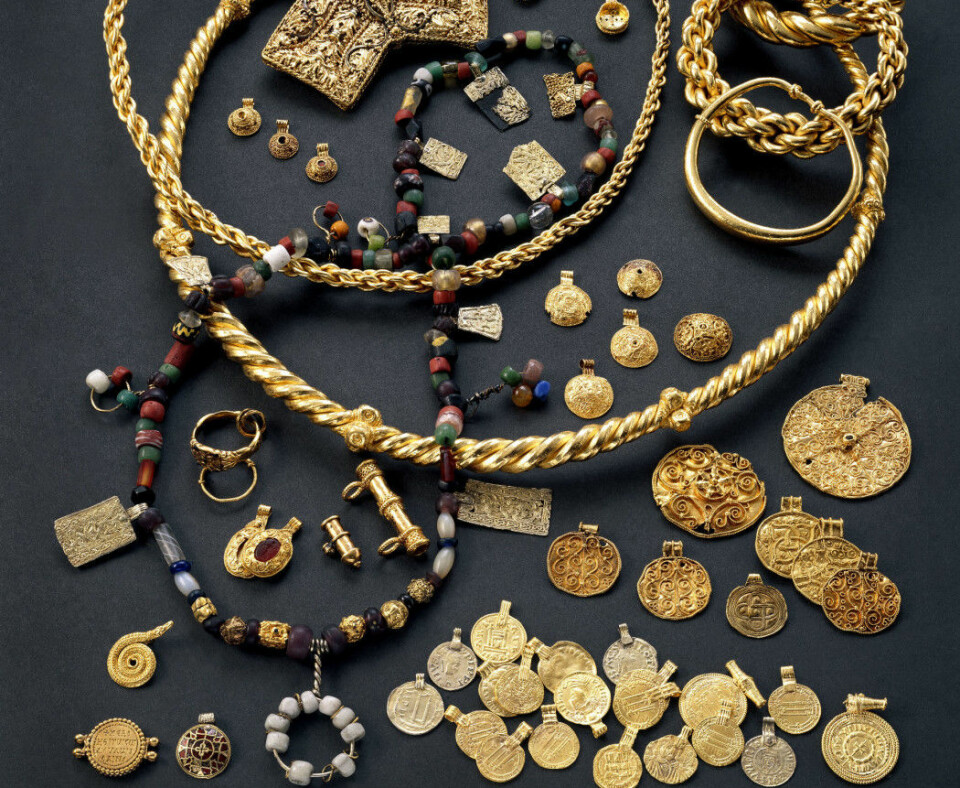
“What has been individual finds for us until now suddenly becomes part of a larger story,” Løchsen Rødsrud says. “This allows us to begin telling the story of the region in a different way. We are in a seat of power here.”
An unusually large house
One of the most exciting finds came, typically, towards the end of the excavation – a gigantic longhouse. The building reveals a series of postholes where the house's posts once stood. This is a common archaeological feature.
“But the proportions are very different,” Løchsen Rødsrud says.
In typical prehistoric buildings, the roof is supported by load-bearing posts placed inside the building. In the building at Sem, it seems that the walls support the roof. There are nine metres between the two walls. This is a large span, even in modern construction.
Along both long sides, 3.5 metres outside the posts that supported the roof, more posts were found, indicating additional walls. Archaeologists believe they may have been slanted to strengthen the walls that supported the roof. These side aisles may also have been passageways.

The big question is which period of time the house belongs to.
“We are very excited about which part of prehistoric or historical times it belongs to,” Løchsen Rødsrud says. “It’s an extraordinary building, and we haven’t excavated the whole thing.”
The house likely continues out into the road and into the field on the other side, where excavation work is not taking place this summer.
“I expect the house is much longer. Twice or three times as long as it is wide,” Løchsen Rødsrud says.
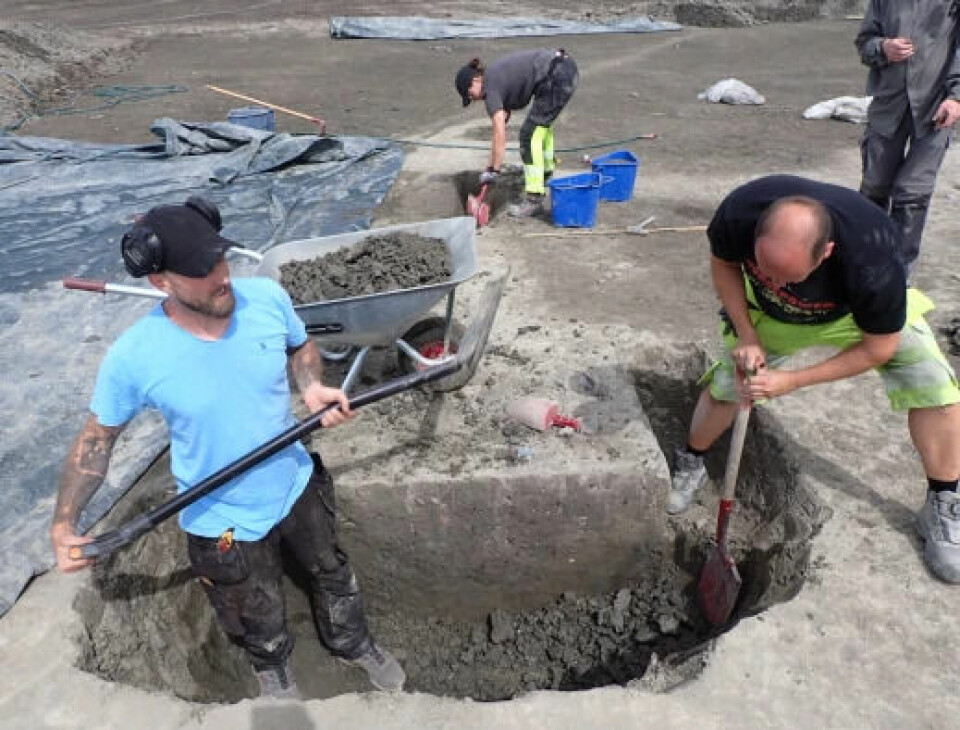
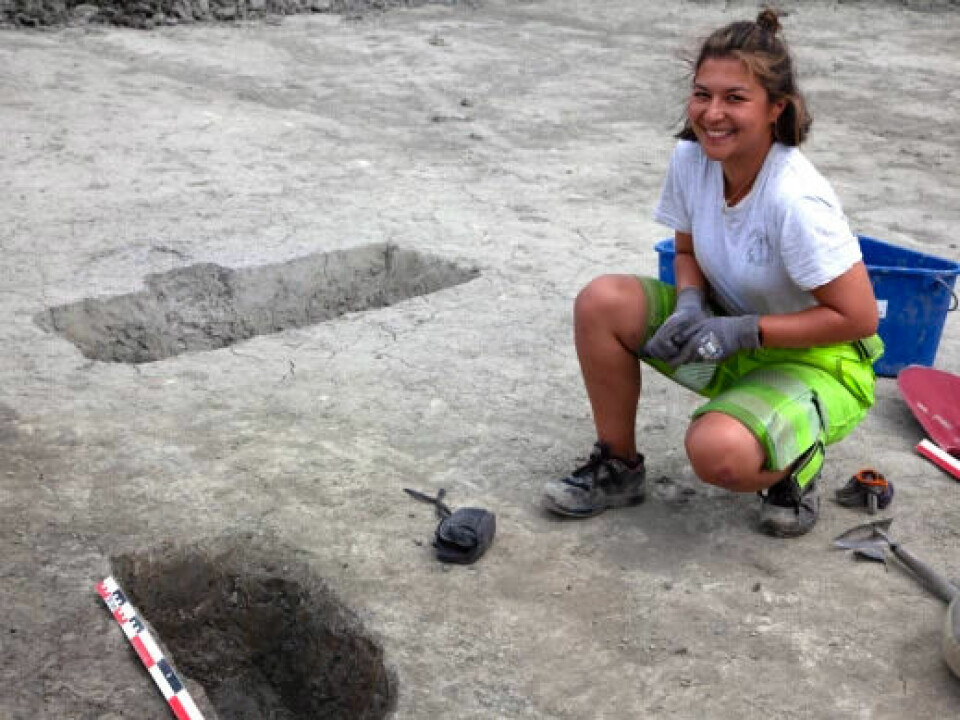
Is it from the Viking Age? Or even older?
The construction of the house resembles something that emerged during the Viking Age and is known from the Danish Viking fortresses. The construction technique allowed for wide and tall buildings. This is what Jes Martens, an archaeologist at the Museum of Cultural History and project leader for the excavation at Sem, tells us.
“Several of these buildings were probably two stories high, as depicted on the Bayeux Tapestry, which tells of the Norman conquest of England,” Martens says.
But the archaeologists have also found pottery that appears to come from the earlier Iron Age in the postholes.
They probably brought the food into the longhouses and ate and drank there. So maybe a beaded necklace was lost in the process.
“If these shards are not random, the house is much older than the aforementioned houses from the Viking Age. In that case, it's quite a sensation,” he says.
The archaeologists must await radiocarbon dating of charcoal and seeds collected during the excavation before they can clarify this.
“If it is a building from the Viking Age, it would likely be at least 40 metres long and nine metres high, based on what we have uncovered,” Martens says.
That would make the house almost the length of two tennis courts.
Feasting and revelry
Near the remains of the massive building, traces of smaller houses have been found, which the archaeologists are certain date back to the 4th to 6th centuries. These houses are approximately 100-120 square metres in size and are likely associated with a series of cooking pits nearby. This corresponds to the Roman period/Migration period.
“They tell us something about the farm settlement at that time and their proximity to the cooking pits where they feasted and held gatherings,” Løchsen Rødsrud says.
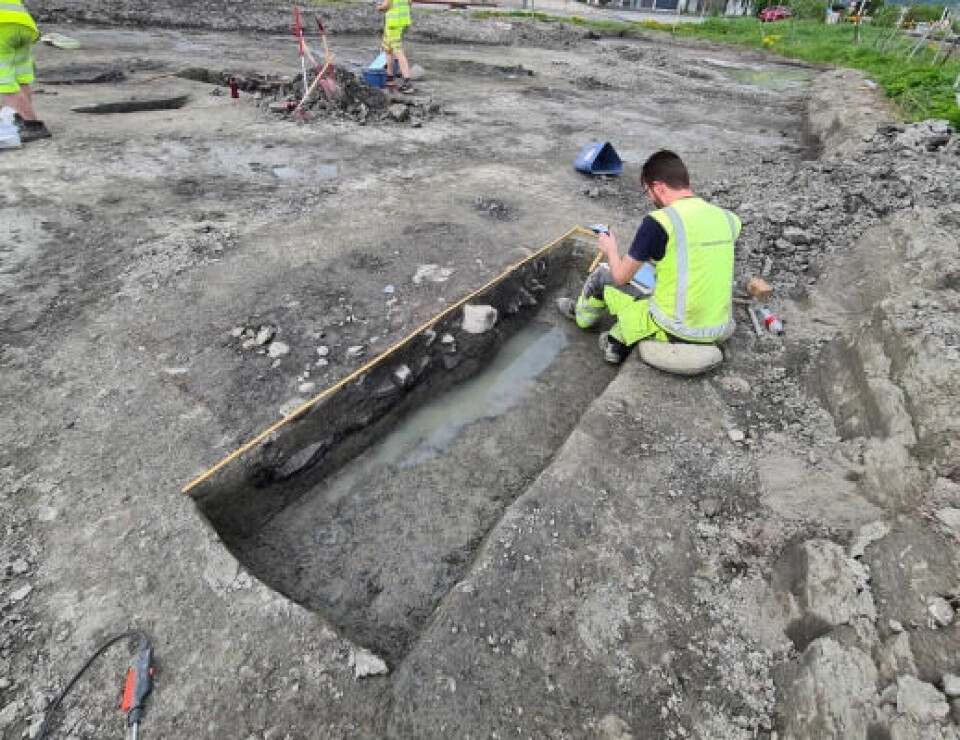
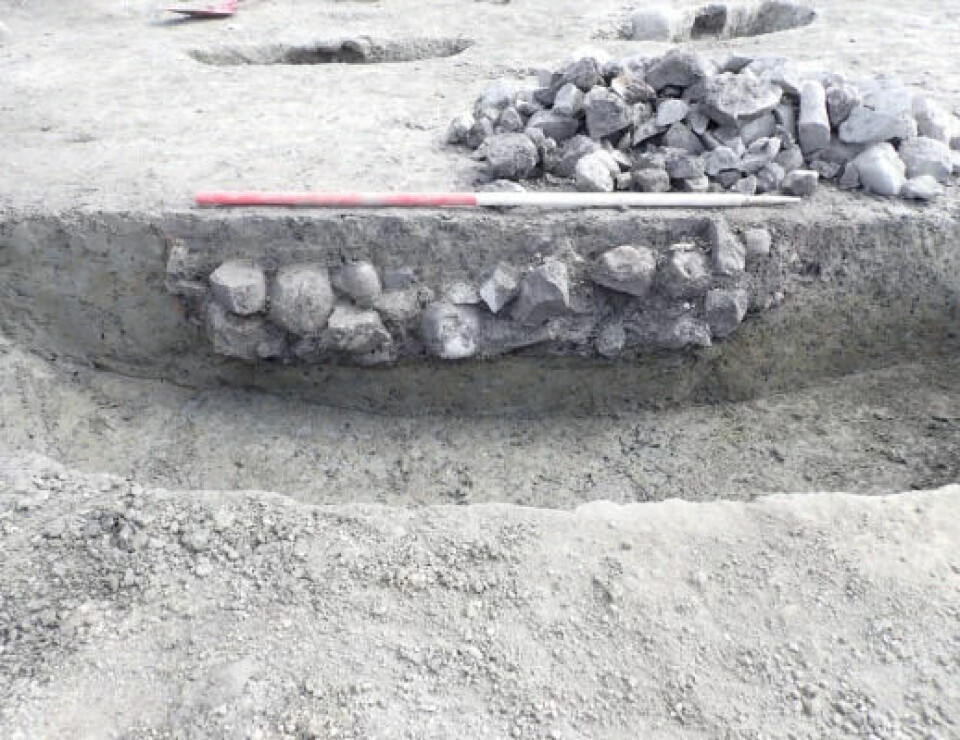
Cooking pits where food was prepared are something archaeologists find everywhere. It is a somewhat mundane finding. Christian Løchsen Rødsrud refers to it as ‘archaeological bulk material’. However, these cooking pits are more intriguing because they were used for parties.
The everyday food during this time consisted of porridge and cereal products, prepared on hearths inside the houses.
In the cooking pits, there are bone remains and teeth from animals, including horses, sheep, and cattle, and even fish bones. There is also a lot of pottery in the cooking pits.
“And lo and behold, a couple of beads appeared in one of the pits,” Rødsrud says. “It’s not everyday fare in a cooking pit; it suggests festivities and revelry.”
“At times, larger celebrations were held, and animals were slaughtered. People drank, and political decisions were made. They probably brought the food into the longhouses and ate and drank there. So maybe a beaded necklace was lost in the process.”
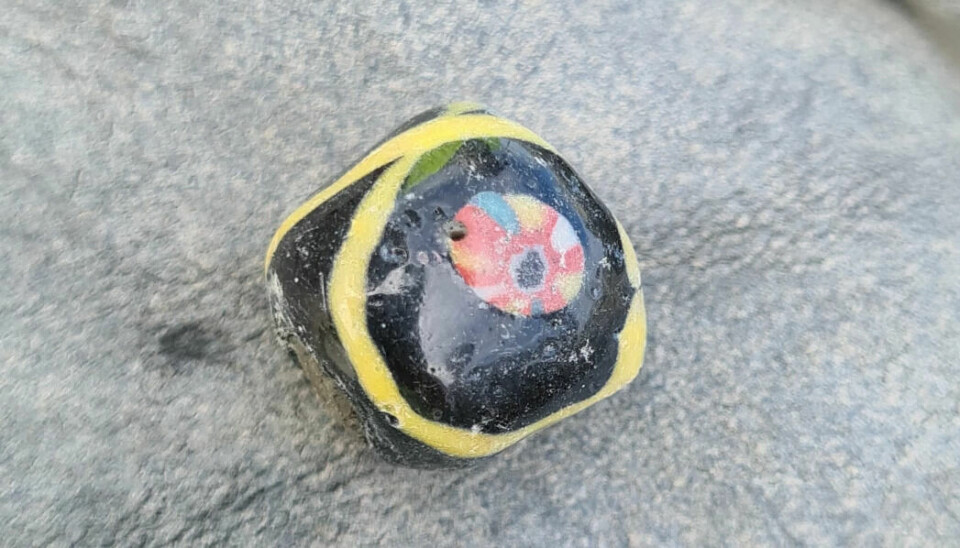
Of course, the beads could have ended up there after the celebration, during everyday activities at the settlement.
Today, the cooking pits can be found in a vast field.
When there were celebrations here over 1,500 years ago, the cooking pits were on a headland, visible to those passing by on the Drammen Fjord.
The name Sem comes from the word Sjøheim, meaning 'sea home' or 'the house or place by the sea'. Perhaps the special location explains the unique finds made here.
- You can read more about historic Scandinavian place names here.
The valuable contribution of metal detectorists
Jes Martens is the project leader for the excavation at Sem. He has been involved at the site since the first finds by metal detectorists in 2014. Together with archaeologists from the Viken County Municipality, he has ensured a solid collaboration with the detectorists ever since. This summer's excavation also began with an organised search involving 14 members of the Rygene Detector Club.
This means that the area is divided into smaller sections that are searched in the same exact manner. The opposite, a social search, risks someone finding a coin in one place and everyone running there to find more coins. In that case, not all areas would be thoroughly searched.
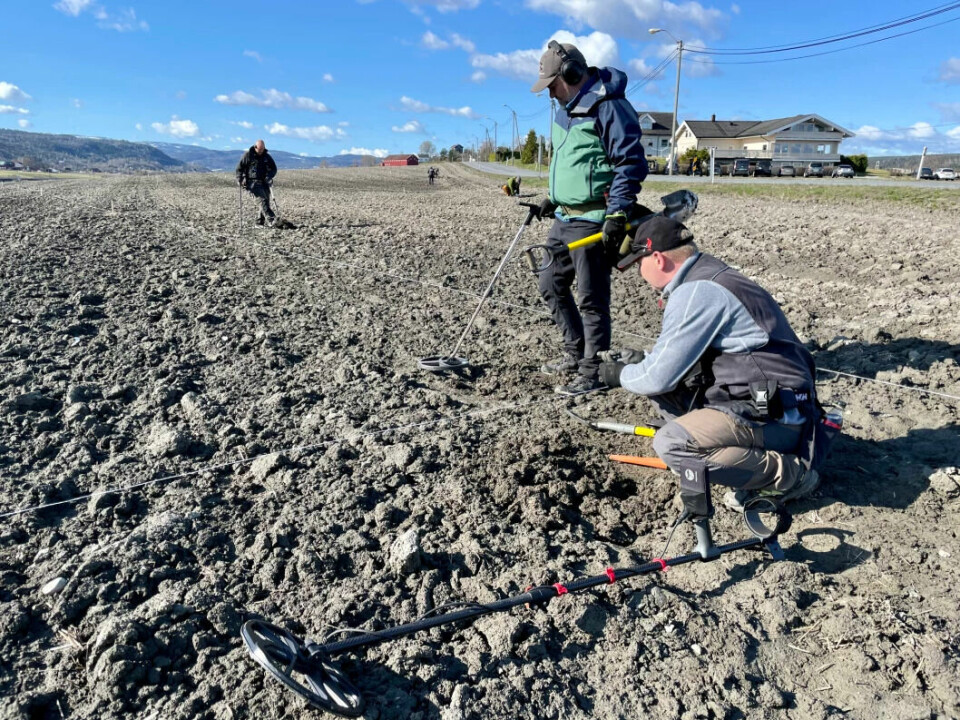
“We have a good collaboration with specific metal detector associations that understand how we work,” Martens says.
Amateur metal detectorists and archaeologists used to have more strained relationships, but in recent years, it has become more positive, he explains.
“They are a resource that makes themselves available to us, and when used correctly, it greatly improves our knowledge of prehistory,” the archaeologist says.
With today's modern metal detectors, discoveries are made that would not have been possible 10-15 years ago.
“My expertise is the last 500 years before Christ’s birth, and there were previously very few metal finds known from this period in Norway,” Martens says. “But because of the metal detectorists, we now have finds from that period. The metal is almost dissolved and would not have been detected before.”
During the Viking Age, for example, coins were cut into pieces because it was the weight of the metal that constituted the payment. These small fragments that were cut off would not have been found 20 years ago either, Martens explains.
The top layer during the Merovingian period
One of the fantastic finds from this summer's excavation was made with a metal detector.
During a metal search in 2019, fragments of a sword hilt – of a rare type – were found. During this year's excavation, another fragment of the same sword was found just eight metres away from where the first piece was located.
The sword is dated to the Merovingian period, which starts around year 550 and extends to the beginning of the Viking Age around 700-800. It was a period of significant change, and a period we know little about in Norway.
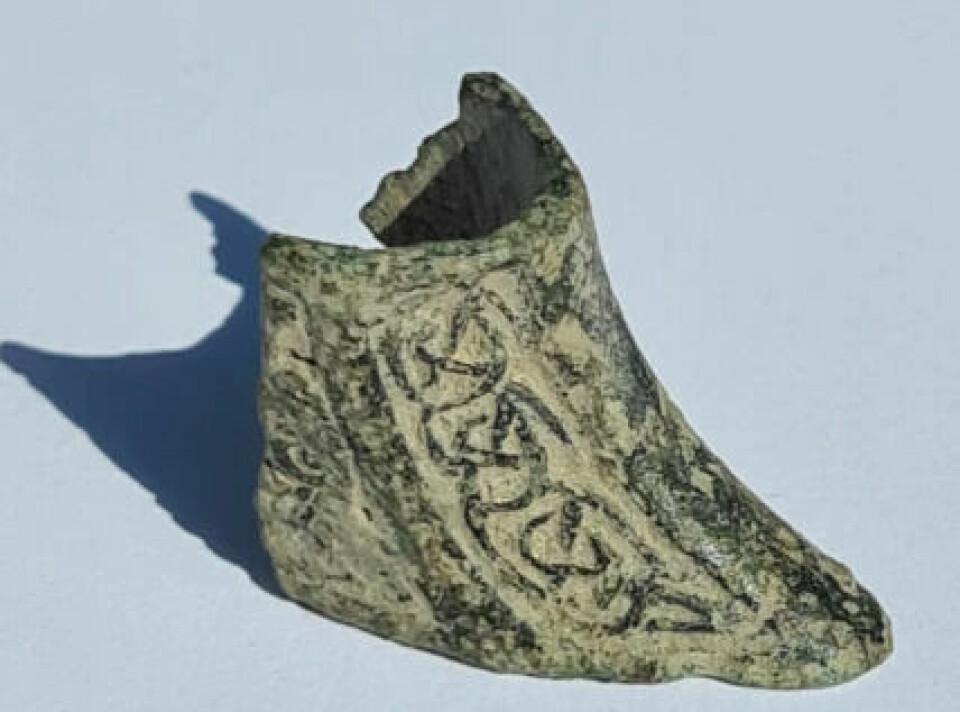
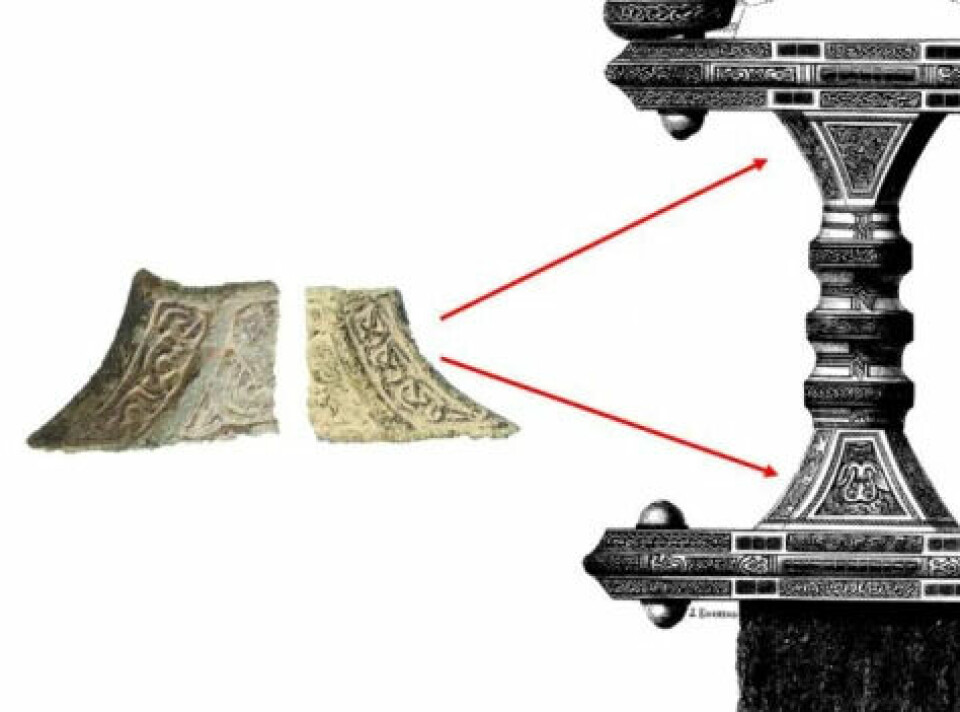
"In its time, the sword must have been quite a beauty," the Museum of Cultural History wrote about the find on Facebook. Even though the plough has cut it up into many pieces, “if you look closer at the fragment, you can still discern traces of its former grandeur.”
“The Scandinavian buried in the grave in Sutton Hoo in England had such a sword. Other swords of the same type have been found in boat graves in the Uppsala region of Sweden, and some resembling them have been found on Gotland,” Martens says. “Now we have found the same type of sword at Sem. This places us at a high and exclusive level.”
The archaeologists hoped to find something underground that could link the sword to a grave or another structure, but here there was nothing left.
During the metal search, 9-10 buckles from this period were also found.
“That’s a significant quantity for such a small place,” Christian Løchsen Rødsrud says.
Among the finds was an agraffe button, a decorative buckle that was worn on the sleeve of clothing.
“The button was decorated in an animal style characteristic of the period and also gilded, so we know that we are at a high level of hierarchy,” Løchsen Rødsrud says.

Leaving the King’s house to the plough
Digging up thousands of years of a central seat of power can be challenging.
“The 17th-century royal estate is located on top of a medieval farmstead, which is on top of what was here during the Merovingian period. Events have been built on top of each other, and it can be difficult to distinguish what is what,” Løchsen Rødsrud says.
And here, another challenge arises: The Cultural Heritage Act in Norway draws a line at the Norwegian Lutheran Reformation in 1537. Anything younger than this is not automatically protected by law.
“Since we do not have legal authority to investigate Renaissance remains, this sorting work has been deprioritised,” he says.
This also means that the remains of the King's house at Sem are left undocumented.
That is to say, the archaeologists and the county municipality have done their best to document as much as possible. But it is far from enough, according to the excavators.
“It is with sadness and anger that I now have to leave the King's house to the plough and the final obliteration of history,” project leader Jes Martens says. “Personally, I think it is a stain on Norway's reputation that archaeological remains after 1537 are not considered worthy of protection. Norway is the only country in Europe with this boundary. Most other countries have a significantly more recent cutoff.”
To be continued
The farmer who owns the excavated field can now finally begin the drainage process. It is because of the drainage that the excavation has taken place.
But actually, it is on the field on the other side of the road, a few hundred meters south, where the most exciting finds have been made in the past – with metal detectors and ground-penetrating radar.
“We have actually been excavating on the periphery of where
the most exciting metal detector finds at Sem have been made,” Løchsen Rødsrud
says. “If we had been able to choose freely, we would probably have moved a few hundred metres. The other main area could have been where the large house extends across the
road.”
That area as not been searched with metal detectors yet, but there are plans to do a geo-radar survey in a few months.
"The secrets of the site will now be unearthed," the Museum of Cultural History wrote in a press release about the excavation at Sem. And the archaeologists are returning to the museum with a multitude of finds.
But an entire field full of secrets still remains untouched.
———
Translated by Alette Bjordal Gjellesvik.
Read the Norwegian version of this article on forskning.no
































